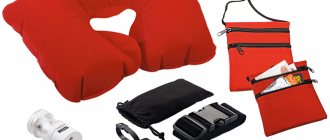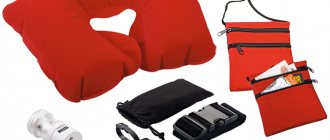The issue related to the transportation of red caviar interests many tourists. Despite the fact that it is possible to transport caviar on an airplane, it is important to take into account a number of nuances: do not exceed the permissible weight, do not forget about receipts, which are required to confirm the fact of purchasing caviar in a store. In addition, it is necessary to remember that the product packaging must be intact and sealed.
How much weight does a plane lift?
The weight of an aircraft is a variable quantity that is made up of a bunch of interrelated variables. The maximum take-off weight of the aircraft is specified during production, but what it will consist of varies from flight to flight.
First, you need to remember that there are different types of aircraft: from small Embraer E-175 to wide-body Boeing 777, where there can be 10 seats in one row.
Secondly, the flight range matters: the amount of fuel required depends on it. That’s why large airplanes fly long distances: they have more wing lift and can carry more people and luggage, which make up the commercial load. Fuel, by the way, is calculated before the flight depending on the cabin load - and who loaded it, a children's camp of skinny seven-year-olds or impressive men. And also from the weather, the distance of the alternate airfield, the built-in need to stop for refueling somewhere in the middle of the route... Oh, in general, everything is complicated there.
Airplanes, in principle, have different passenger capacity, and it does not directly depend on the type of aircraft. The same model may have different distances between seats, and may or may not have first and business classes. This is already the airline's entertainment field. For charter companies, for example, it is not profitable to offer privileged classes: the more passengers you can transport, the more trips you can sell - everything is in the black.
When loading the luggage compartment, not only tonnage matters, but also volume. Simply put, the load can be large but light (like a batch of duvets), or it can be small but weighty. If the load is heavy, there is a limit on the load on the floors. And dangerous goods require more space around them. A whole science.
So the total permissible weight of the luggage compartment, as well as the entire aircraft, with fuel and the corpulent Aunt Manya in the next seat, will always be different. That's why smart people came up with the average weight of luggage and carry-on luggage with the expectation that someone will take less, and someone will pay for the excess. Baggage can weigh 20, 23, 25 kg, hand luggage - 5, 7, 8, 10 kg, depending on the airline. And in 99% of cases this will be written to you in detail on the itinerary receipt.
Well, now let's move on. Let's figure out what and how to transport. Spoiler: everything is complicated here too.
How much does caviar cost when sent from Kamchatka or Vladivostok?
- Caviar in Moscow costs the same as caviar brought from Vladivostok by relatives and friends.
- The high price is explained by the fact that large enterprises work for export.
- Sellers do not bargain because they know that there will be a buyer anyway.
- At the market you can taste caviar with a spoon. Don’t take a lot at once because taste buds can merge all the flavors into one.
- The cheapest is pink salmon caviar (from 700 to 1000 rubles per kg), the most expensive is Chinook salmon caviar (from 1.5 thousand rubles per kg).
- Although the price in the region is the same as in Moscow, the quality and variety are higher.
Watch the video: Cost of caviar in Kamchatka stores
Varieties of caviar
In the Far East, caviar is not called red. It is divided according to the type of fish.
- I call caviar the first grade if it is salted within four hours after the fish is caught. At the same time, it should have no more than 5% salt.
- There is no higher grade of caviar.
- Depending on the type of fish, caviar has the appropriate characteristics (Table).
| Fish name | Egg color | Size of individual eggs (mm) |
| Sima | Dark red | 2–3 |
| Coho salmon | red | 3–4 |
| Chinook | red | 2–3 |
| Red salmon | deep red | 3–4 |
| Pink salmon | dark orange | 3–5 |
| Chum salmon | yellow-orange | until 9 |
Where is the best place to buy caviar and how to choose it
- It is better to buy caviar in glass; in tin cans it is usually second grade.
- If the can says “Chum salmon”, then it may well be pink salmon caviar.
- Yuzhmorrybflot and Okeanrybflot have good caviar.
- Be sure to try before purchasing.
- It is necessary to check at what temperature the caviar is stored.
- There should not be a lot of excess liquid in the jar.
- The shelf life of an open jar of factory-made caviar is one week.
How to check the expiration date of a product
How to choose the right red caviar
When buying caviar, you need to carefully read what is written on the packaging.
- The date on the caviar jar should not be pressed in, but knocked out.
- The date of production must correspond to the spawning period of the fish, i.e. July–August. If a different period is indicated, then the caviar was frozen or repackaged and will therefore be of poor quality.
To determine the quality of the product, you need to place a little on a flat surface and blow. If the eggs move, then the quality is good; if they stick, the eggs are bad.
Watch the video: How to choose the right caviar.
Liquids
The rules for carry-on luggage are quite strict. In total, you can carry no more than 1 liter of liquid (rum from duty free does not count), but each bottle can be no more than 100 ml in volume. “On the bottom” will not work: this is the case when not only the amount of liquid matters, but also the size of the bottle. And in an ideal world, all bottles and vials should be placed in a resealable transparent bag.
In fact, not everyone makes sure that all liquids are packaged in the notorious 18x20 cm transparent bag. At Moscow airports, almost no one pays attention to this additional packaging. But at the airport of the same Marseille, if, God forbid, you put nail polishes or mini-shampoos in different places, you will be forced to collect them throughout your suitcase and put them in a bag, which they, careless people, will give you anyway . It’s easier to prepare in advance and not be that bad person who slows down the entire line for inspection.
Anything over 100 ml goes into luggage. It is prohibited to transport flammable liquids in any form, so you will have to look for something to light a fire on the spot. Radioactive, poisonous and toxic - also no-no. Liquefied gases, oxidizing substances and organic peroxides, not including hydrogen peroxide, are also prohibited. Play chemists at home.
How to carry alcohol on a plane
The amount of alcohol per passenger is regulated by customs. For example, 3 liters of alcohol per person over 18 years of age can be imported duty-free into the Russian Federation, and up to 5 liters with duty; The norms differ in different countries. You are not allowed to drink alcohol you brought with you or bought in duty-free on board - although your neighbor in the back drank a dozen small bottles of whiskey, it is generally prohibited to do so. This habit may come back to haunt him in the future, when airline blacklists become not the exception, but the rule.
Water on the plane
You can take water with you on the plane, but only that which you buy at exorbitant prices at the airport after going through security. Your bottle will be asked to throw away in advance because it is clearly over 100ml. Many airports have drinking water fountains in the clean area, which you can use to fill your bottle, but civilization has not yet reached everywhere.
How to carry perfume and eau de toilette on a plane
Eau de toilette is also water, but it is special. In hand luggage, it is subject to the general rules for transporting liquids (no more than 100 ml, but you can buy a large bottle in duty-free). But some countries have import restrictions. For example, you cannot import more than 50 ml of perfume and 250 ml of eau de toilette into Ireland. If you are not going to sell perfumes, this will be enough for you.
Useful tips
Finally, here are some useful tips that will help you avoid various unpleasant situations:
- If the flight is quite long, freeze the jar first so that it does not spoil.
- There are special bags that will help you transport it comfortably and without the risk of leakage.
- If you are carrying a large amount of goods, you must have documents with you confirming that you are not a poacher and the transportation is completely legal.
- Just in case, take with you a receipt confirming your purchase.
Thus, there is nothing difficult in transporting this product. It is enough to know the rules and regulations of different countries to avoid getting into an unpleasant situation.
How to carry food on a plane
In the case of food, it is not so much the rules for transportation directly on the plane that are important, but the customs regulations of the countries between which you are flying. Moreover, they relate to both import and export. Well, sanctions, where would we be without it?
You can't officially bring food into the United States. This doesn’t stop some people who go to visit American friends from bringing in a jar of caviar, so they put on a straight face at the security check in the States. But in general, joking with American customs and border guards is very risky.
The French won't let you out with cheese in your hand luggage. They’ll take the tasty treat for themselves and won’t wince. If your soul requires a kilogram of brie or Roquefort, check it in your luggage. Or buy at duty-free, but the selection and prices there will not be the same as in a store in the city.
Is it possible to carry caviar, fish and other seafood on an airplane?
From the territory of Russia you can export up to 5 kg of fish and seafood and up to 250 g of sturgeon caviar in original packaging with store receipts. Beyond this, it is impossible to export sea wealth. And you can import up to 5 kg of plant products (except for seeds, seed material, planting material, potatoes).
The same restriction applies to products of animal origin - but they can only be ready-made and in original packaging. We also periodically introduce bans and restrictions on the import of products from certain countries, which you also need to read about before your trip. The list of products prohibited for import into Russia can be found on the Rosselkhoznadzor website.
Meat, sausage, fruit
This applies to both meat and fruits, which simply cannot be imported from a number of countries. Most likely, you won’t be allowed on the plane with a whole watermelon, because it might burst. And with coconut, the peel of which cannot be cleared during inspection. Rules for exporting products from exotic countries like Thailand need to be clarified with the air carrier. You still won’t be able to import more than 5 kg, as we remember, but they will advise you on proper packaging.
Special rules may apply to anything with a strong smell. Even lemons from a customs-friendly country may not be allowed on board, because the strong smell of citrus fruits will displease other passengers. So those same French people who take away your cheese are just taking care of their seatmates, yes.
It's about the same story with sausage. They may prohibit you from taking it in hand luggage because of the aroma, and it is clearly not an essential product on a flight. Plus, you can’t import animal products into many countries: you never know, maybe you’ll introduce some kind of epidemic. There’s the same problem with lard (if it’s in a factory package, ok; if it’s in a homemade package, then it’s off limits). So again: read the customs regulations of the destination country!
Honey, canned food, cakes
- Honey and oils , unless otherwise specified by customs rules, can be transported in the same way as any liquids. Small containers will easily reach their destination on the plane, but large ones will fit in your luggage.
- Canned goods are worth checking in your luggage, and cans, depending on their volume. A small glass jar of jam or the same honey in hand luggage has never harmed anyone.
- a cake on the plane , then know that formally you can carry cakes. But, just in case, check with the airline. They might be a little surprised there. Or regard the cake as a liquid in some places, and then you yourself remember the rules.
- What no one will prohibit are chocolates, candy bars, muesli, cookies and other sweets in factory packaging. Kilograms of all kinds of overseas sweets or a light snack for late flights are not taken away.
Baby food on the plane
Baby food is a special issue. It does not have to fit into the 100 ml standard; you can take it on board if you are flying with a child. This also includes dietary nutrition. At the same time, in the United States it is prohibited to carry powders and baby food with a volume of 12 ounces or 350 ml on board an aircraft.
Don't forget the certificate and receipt
A mandatory requirement for everyone is to have
product
certificate original packaging
with the following information:
- name of the manufacturing company;
- year/month of production and expiration dates of caviar;
- weight of goods including packaging.
IMPORTANT:
if you are going to transport caviar abroad,
when purchasing, be sure to inform that you need a product certificate
.
Stores provide this document at the request of customers and it is not attached to a regular purchase. To avoid unnecessary questions from customs officers, you should have with you the receipt
for caviar received when making the purchase.
In addition, under no circumstances should you transfer caviar from the original packaging
to another container, even if you are afraid of breaking the glass container along the way.
Is it possible to carry hookahs, IQOS, vapes, lighters and cigarettes on a plane?
As for all sorts of things for smoking: you can carry them, you can’t use them. In terms of actual transportation, vapes, electronic cigarettes and IQOS most likely fall under the concept of electronics (more on that below). You need to take all this stuff into the cabin; you can’t charge it from sockets on the plane.
- The vast majority of airlines prohibit smoking in the aircraft cabin, including electronic cigarettes. IQOS is a relatively new thing, it is not yet mentioned in advertisements, but in essence it is almost the same device, except that there is no water in it. Therefore, you cannot use IQOS on board an airplane.
- On some (especially American) airlines, it happens that people quietly smoke a vape right in the cabin, and flight attendants pass by. But this is the exception rather than the rule: smoke detectors have not been canceled. Then you will be warming up in Anadyr due to an emergency landing when these sensors are triggered.
- Nothing prohibits you from taking a hookah with you, but in many southern countries, where they are usually carried from, all parts except the glass bulb are asked to be checked in as luggage. Because the pipe can be used as a weapon.
- Information for the conservative: the amount of imported tobacco products is regulated by the customs of each specific country. Usually this is 200 cigarettes per person (one block), or 50 cigarillos, or 250 g of tobacco. In a number of eastern countries, where healthy lifestyle has not yet reached, more is allowed.
- Well, another important thing for smokers is that a disposable lighter can almost always be carried in hand luggage (one piece per person). This does not apply to gasoline lighters like Zippos; they cannot be carried on most airlines.
Features of customs clearance
Customs clearance is carried out in terminals where quarantine warehouses are provided for storing food products. Processing times are reduced as much as possible, due to the risk of rapid damage to the goods. It will take up to 24 hours, and in most cases only a few hours.
A veterinary certificate is obtained from the veterinary service of the importing country. However, he does not guarantee that additional checks will not be carried out at the customs point. Caviar certification is carried out on the basis of EAEU TR 040/2016 “On the safety of fish and fish products”. The document confirms the quality of the product and its safety.
To speed up the customs clearance procedure, reduce costs, and minimize risks, it is recommended to contact a customs representative. The advantages of the services of a customs representative are that he takes full responsibility for customs clearance, is thoroughly familiar with the Customs Code and will quickly resolve any problematic situations. A licensed customs representative of SB Cargo will help collect the necessary documentation, issue certificates, prepare for inspection, declare products, and ensure the release of cargo for free circulation. Call us by phone or email us [email protected]
Medicines and syringes
This also depends on the country. In the UAE, for example, this is terribly strict: the import of antipyretics, painkillers and many other drugs is severely limited. You cannot import even basic Corvalol or Pentalgin. It’s also difficult with codeine-containing drugs (although it’s easy for some), as with antidepressants. To travel to Australia, you need to get prescriptions for everything, because they are extremely careful when it comes to importing medications. Analgin cannot be imported into the USA. If you have any questions or needs, it is better to study the customs regulations of the destination country and drug components in advance or consult the embassy.
Usually they ask to carry medicines in original packaging, and not to pour all the pills in a row into one jar. It's logical. In fact, most customs officers don’t care, but to avoid unnecessary hassle, it’s better to do it according to science.
Prescription drugs require a prescription. And by this word we do not mean a sticker with an advertisement for a drug on which the local doctor practices writing illegibly, but a real document with stamps and other amenities.
You need to be prepared for the fact that every tablet in your carry-on luggage may raise a question. A case from practice: on the flight (!) from Tunisia, the inspection service, standing over a gutted bag, demanded a prescription for noshpa for half an hour.
In principle, it is usually not very scary to lose standard pills for the stomach or head on the flight home. But if this happens on flights far from home or with expensive medications, it’s not so fun. Therefore, it is better to hide important pills in a suitcase, and take only the necessary minimum with you to the salon. Or, if you are flying without luggage, play it safe with prescriptions.
To transport syringes and needles, you must also obtain medical documents confirming the need to fly with them. This is especially true for people with insulin-dependent diabetes, so that no one has an absurd requirement to check insulin in their luggage - this drug must be handled with care, and the luggage compartment of an airplane does not imply this. Hypodermic needles cannot be transported without medical justification.
Rules for transporting caviar
Caviar cannot be exported from Russia, only transported within its borders. But domestic customs does not limit the amount of product for transportation and does not establish strict requirements for packaging.
In Europe, you must keep receipts of purchase; the packaging must be strictly sealed with mandatory markings. The packaging material does not matter; it can be metal, plastic, glass.
Make sure that on the container:
- the manufacturer was indicated;
- there was an expiration date and date of packaging of the product;
- information about product certification was provided;
- Gross and net weights were noted.
If a tourist is bringing a gift from the Far East to Russia not in its original packaging, you need to make sure that you have a durable container with a sealed lid.
To protect your cargo and the luggage of other passengers from odor as a result of an accidental leak, during the flight the container with caviar can be additionally wrapped in cling film or other packaging that will not undergo deformation.
Documents for transportation of caviar
The established rules regarding how much caviar can be carried on a plane in Russia and how exactly it can be transported apply equally to both red and black caviar. But there is one significant difference: red caviar can be transported without documents, and you will need to confirm the fact that you purchased black caviar from a reliable manufacturer.
The transportation of black caviar is regulated by poaching laws. In the Far East, Kamchatka, and Sakhalin, a large number of companies and individuals are engaged in illegal fishing of valuable fish. Therefore, be prepared to carefully check the product documents.
You will need to present:
- receipt for the purchase of goods;
- product certificate;
- waybill.
Be sure to request the necessary documents from the selling company and save them before your flight. If there are no documents, the cargo will be confiscated.
Weapons and folding knives
According to the rules of the Ministry of Transport of the Russian Federation, you can carry in your luggage crossbows, spearguns, checkers, sabers, cleavers, scimitars, broadswords, swords, rapiers, bayonets, daggers, knives with ejectable blades, with locking locks, simulators of any type of weapon.
Other weapons (for example, air pistols) can be transported if all the paperwork is present - unless there is a restriction, which is often imposed during international sporting events. When checking in for a flight, you must inform airline representatives that you are carrying a weapon. Aeroflot asks such passengers to arrive early and check in no later than an hour and a half before departure.
On domestic flights, the owner of the weapon must have the appropriate permit; when importing or exporting weapons, a permit must be issued from the authorized body of the Ministry of Internal Affairs.
Be prepared for the fact that upon departure the weapon will be taken away for “temporary storage” and will be issued only at the destination airport. It must be transported unloaded in proper packaging (holster, case, etc.), and ammunition must travel separately. The weight of this same ammunition should not exceed 5 kg per passenger. Cartridges for gas weapons are prohibited for transportation by air. In addition, the circulation of imported electroshock devices is prohibited, that is, you cannot buy a stun gun abroad and bring it to Russia.
Some countries have their own characteristics. For example, Vietnam and Belarus require that air pistols be handed over with the obligatory execution of a Transfer Certificate, and Spain has gone even further - they require that any weapon, even fake ones, be marked with special tags.
Important: you cannot even take imitation weapons into the salon. That is, we check toy pistols in luggage, despite the protests of five-year-old and thirty-five-year-old children.
Household knives and scissors can be carried in luggage. True, if you want to bring a cleaver, perhaps it will be sent for examination to see if it is a bladed weapon. But even folding (without a lock) travel or pocket knives with a blade length of less than 60 mm cannot be carried in hand luggage. Moreover, this rule is written in the section about duty-free booze. So that they don’t open the package and bottle and get drunk. Corkscrews are also not allowed into the salon. And knitting needles. And then you never know.
Features of customs clearance of caviar
To decorate caviar, several conditions must be met:
- Inclusion of the manufacturer in the Rosselkhoznadzor register.
- Providing a veterinary certificate of the country of origin, on the basis of which an import veterinary certificate will be issued by the Russian Veterinary Service represented by an employee of Rosselkhoznadzor.
The specifics of customs clearance are affected by:
- type of customs procedure;
- type of cargo;
- type of vehicle;
- category of foreign trade participants.
Cash
As you understand, it is not the weight that is important here, but the quantity of currency (although a thousand bucks in one-cent coins will raise questions from any sane person). In general, declare it and take out your millions. Without further delays, you are allowed to travel with currency equivalent to 10,000 US dollars. Rarely do people need that much money in cash, but anything can happen.
The export of national currency from some countries is prohibited. Such states include Egypt, Tunisia and many other countries with their own unique money. Amateur numismatists can only be advised to hide a small amount of local money among the rubles and be ready to part with them if something happens (then make surprised eyes and say that you forgot what to take from you, tourists).
Types of products
Depending on the season, various types of caviar are imported (exported):
- Red caviar of various fish species, such as pink salmon, coho salmon, salmon, sockeye salmon, chum salmon, trout.
- Black caviar of sterlet and sturgeon.
- Sea urchin caviar.
- Breakout caviar of halibut, pike, herring, pollock, pike perch and others.
Cosmetics
- Creams, gels and other similar cosmetics are regulated in the same way as all liquids. You can take tubes and cones with a volume of no more than 100 ml into the salon, in total no more than 1 liter, and so on, and so on. You can take larger containers into your luggage, but several identical cones can be regarded as a commercial lot for sale, which must be declared.
- Paste (even toothpaste) belongs here, and it also needs to be placed in a bag of liquids. There is nothing illegal about carrying it in hand luggage, but you may not like it at security. For some reason, the Chinese are suspicious of it and love to open and sniff tubes of toothpaste while going through security. But maybe they just like it. We don't judge.
- Aerosols, even if they are not completely liquid and under pressure, can be transported along with liquid. According to Russian rules, it is permissible in luggage to carry aerosols intended for use for sports or household purposes, the valves of the cans are protected by caps, in containers with a capacity of no more than 0.5 kg or 500 ml. No more than 2 kg or 2 liters per passenger. In hand luggage - the same 100 ml. Aerosols, including deodorants, marked “flammable” are prohibited from being carried in hand luggage, even if the canister has a volume of less than 100 ml.
- We remember about small nail scissors: they, like a corkscrew, cannot be taken into the salon. An iron nail file can also be considered a weapon. So manicure things need to be checked in luggage. Or endure without them and fly with one soft file in your bag.
Why is it necessary to limit the amount of caviar for air travel?
According to Ilya Shestakov, today not only passengers, but also crew members (flight attendants, pilots) take advantage of the lack of restrictions to transport red caviar for subsequent resale. Caviar is transported in whole shipments of more than 25 kg. At the same time, the product does not undergo veterinary control and does not have documents confirming the quality and safety of the product. The lack of restrictions provides a loophole for poachers, as the head of Rosrybolovstvo noted. “According to various estimates, the volume of such transportation is more than 200 tons,” RBC quotes Shestakov as saying.
Questions and answers How will the rules for transporting fruits and vegetables change?
Rosrybolovstvo proposes that the Ministry of Agriculture, Rosselkhoznadzor and other interested bodies jointly prepare regulations that will provide for the mandatory availability of veterinary documents when transporting salmon caviar.
Electronics
Household electronic devices such as phones, power banks, laptops in hand luggage do not raise any questions. It is also not prohibited to check them in (turned off!) as luggage, but for the integrity and safety of the equipment, it is still more logical to take it with you into the cabin. The exception is power banks. They cannot be checked in as checked baggage, only in hand luggage.
At one time, airlines warned that it was strictly prohibited to carry Samsung Galaxy Note 7 on board (these are the same phones that exploded more often than they worked). The hype around them has died down now, but keep this in mind.
Professional audio and video equipment usually requires an airline permit.
You can take with you a hairdryer, electric razor, straightener or curling iron (if it is not pointed). In general, if an electrical device fits into the parameters of hand luggage, you can carry it, but in each specific case, a specific employee may not like it. Especially if you have a waffle iron, electric grill or something else.
Regular batteries and large accumulators should be carried in hand luggage, making sure that they do not accidentally short circuit with each other. Carrying spare batteries (separately from equipment) in luggage is prohibited.
A special place is occupied by small-sized means of personal transportation, in Russian - unicycles, Segways, hoverboards, electric scooters and hoverboards. The reason is the large lithium batteries they run on. At Aeroflot (which follows the recommendations of IATA, the International Air Transport Association), they must be checked in as baggage after first removing the battery and taking it in hand luggage. The battery must meet the power standard: 160 Wh. If the battery cannot be removed, such a device is processed through the airport cargo terminal as “dangerous cargo.”
How to prepare for transporting caviar
Before leaving home, place the product in the freezer for 1 hour. It is not recommended to place the product in the freezer for a longer period of time, especially if you are transporting sockeye salmon, trout or pink salmon caviar. If defrosted abruptly, the product will lose its presentation.
Helpful tip: when transporting caviar on a plane, use a thermal bag that will keep the delicacy cold.
For transportation, buy caviar in plastic containers or cans. Glass jars are unreliable and can break if airport staff handle luggage carelessly. To protect glass jars from damage, wrap them tightly with a soft cloth. Properly packed cans should not clink or move when carried in a bag.
Other
This is where even more fun begins than before, balancing on the brink of customs legislation and common sense.
Corals cannot be exported from Egypt. From some African countries - ebony crafts. Many maritime countries will not let you out with shells picked up on the beach. Keep receipts for souvenirs, as they say, until the end of the trip. Special rules apply to antiques and animal skins. According to Russian customs regulations, you cannot export (even on yourself) diamonds worth more than $75,000.
Many people do not check musical instruments in their luggage. Not because it’s impossible to do this (the company is doing their best to register them as fragile oversized luggage), but out of love for the instrument. For large instruments, like the double bass or cello, it is customary to buy a ticket so that they “sit” in the next chair and nothing happens to them. Small instruments are accepted as carry-on luggage. If you are not a pro, but just want to take your father's guitar to play somewhere in the mountains, you can buy a reinforced concrete (figuratively speaking) case and put the instrument in the luggage compartment, making sure that it is marked as fragile.
Fragile luggage can be anything oversized: for example, a TV or your grandmother’s favorite floor vase that you are taking as a gift to a pen pal. It is advisable to inform the airline in advance that you are traveling and take care of the packaging. Remember: fragile in the understanding of movers does not mean over-delicacy. And in general, anything can happen. So ten layers of foam and a normal box are on your conscience. Well, yes, you will have to pay extra for such cargo. Sometimes, to calm down, you can use the life hack of musicians and arrange a place in the cabin for your cargo. However, this is also done in agreement with the airline, and not simply with the purchase of two tickets.
Another question is whether the vase is a work of art. Or whether a painting bought at a flea market is valuable. If you are bringing something from abroad, keep your receipt. You can transport a framed painting in your hand luggage if it fits in size. And in a transparent film - so that it can be seen that you did not steal Kuindzhi again. To export even your own paintings from Russia, it is recommended to issue a certificate stating that the Ministry of Culture is not against it and the painting was painted in our time. It’s possible without this, but it depends on your luck. Well, if suddenly the truth is something incredibly valuable, good luck with the paperwork. Take care of the papers in advance.
If you bought a cabinet, a granite countertop, a giant refrigerator, or a car that doesn't run, you'll have to ship it to you via freight. And sometimes by sea: this is a very common practice, and although containers with cargo take a long time to travel by sea, you can drag at least the entire contents of a two-story house.
For sports: skis, snowboards, bicycles, surfboards and diving equipment can be easily checked in as luggage. Sometimes companies even introduce free transportation of such things for the season, in addition to luggage. Transportation of large sports equipment (like a vaulting pole) is subject to agreement with the airline. Only paintball fans may have problems: a paintball gun, according to the law, is a product structurally similar to a weapon, so a permit must be issued for its export. It is difficult to import such equipment, but it is possible: you will have to work hard to prove that it is not a weapon, but a toy/sports equipment, and perhaps involve lawyers who are familiar with the product nomenclature used by customs officers and various acts. Think twice about whether you need it.
For the romantic ones: bouquets of flowers are allowed to be carried in the salon even at Pobeda, but live, uncut plants must undergo control and receive special documents stating that they do not pose any danger.
To travel with your favorite animal, you need to obtain a veterinary passport. Only cats and small dogs are allowed on board in carriers that can be placed in the cabin, but large animals must travel in the luggage compartment. In the case of exotic creatures (snakes, lizards, many species of birds), permission will be required, that they can be exported or imported, they do not carry any infection and their relocation will not be an irreparable loss for the population.











